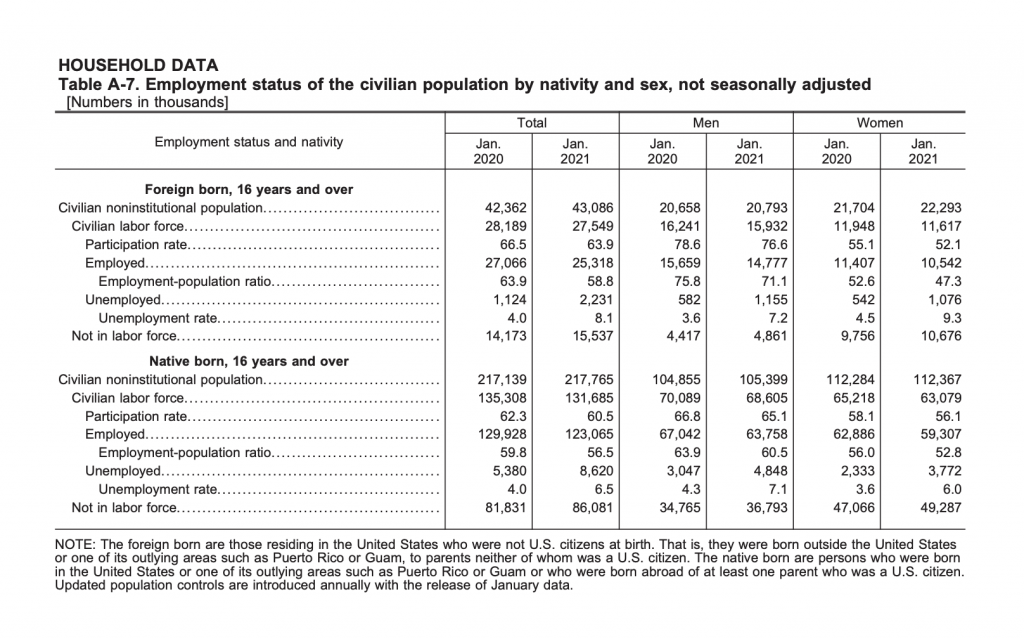
The Merrfeld Jobs Report is an ongoing series highlighting employment numbers and what that means to job seekers nationwide.
The Bureau of Labor Statistics (BLS) January Jobs report, released on February 5, 2021, showed a small lift (49K jobs added) with unemployment falling 0.4 percent to 6.3 percent with the number of unemployed persons decreasing to 10.1M. This includes 2.7M persons on temporary layoffs.
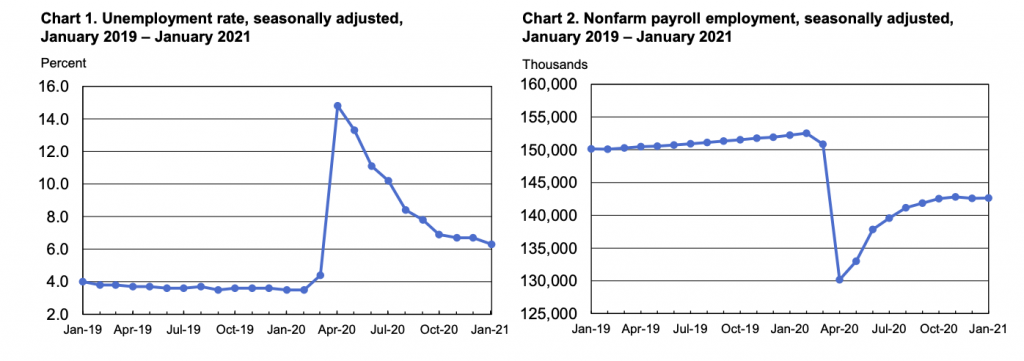
“…notable job gains in professional and business services and in both public and private education were offset by losses in leisure and hospitality, in retail trade, in health care, and in transportation and warehousing.”
A sliver of hope…
The New York Times was able to shed a little positive light on the situation noting this is our second consecutive month without job losses in the last year. In addition, they point out that the December stimulus and the global push for vaccinations is paving the way for wider reopenings. Unfortunately, long-term unemployment (those who have been out of work 27 weeks or longer) continues to rise to 39.5% with 4M+ people in January out of work for more than six months.
What does this mean for job seekers and those considering a job change?
Despite the dismal report, there are companies continuing to hire. One of our favorite sources is the Get Hired Newsletter published by LinkedIn Senior Editor for Job Search and Careers, Andrew Seaman. His report dated, February 8, 2021, includes 150+ companies all seeking to fill 100 – 100,000 positions. So there is hope.
Keys to a successful job search in 2021
Your career is one of the most important projects you’ll ever work on. Just like a key project at work, your career requires strategy. You may be tempted to hop online and just start applying to every job you see. This ‘shotgun’ approach may keep you busy but is unlikely to give you the greatest ROI. Instead, design a strategy that yields results.
A job search strategy consists of 7 key elements:
Begin with the end in mind. Know the type of position you hope to find. Determine locations, target companies, and the job titles you’re most likely to match. Once you’ve established those goals, remember to be flexible and think outside the box.
An Accomplishment Focused Resume
Resumes should highlight what sets you apart, what you’ve accomplished in your career, and who you are as a leader. Be sure to include quantifiable data/metrics where appropriate
When was the last time you audited your profile AND activity? Does it attract hiring managers and recruiters? If you’re actively job searching, make sure your LinkedIn profile mirrors your resume. This will attract recruiters and hiring managers who are actively searching for top talent on LinkedIn
85% of all positions are found through networking. This makes it vitally important that you identify your network, how they can help you, and the best ways to reach out to them. Staying engaged and following up with your network is key!
Are you complaining on social media or using it to demonstrate why employers want you on their team? No one wants to hear you complain. Cool it
Are you practicing your interview skills? Will you be ready when an interviewer wants to meet with you in 20 minutes? Know how to answer the tough questions, what types of questions to ask, and how to stay calm during an interview.
Do you know your automatic yes and automatic no numbers? If you don’t know these numbers, you’ll get taken advantage of. Know what you want and what you need and what you’re willing to walk away from.
No matter where you are along the journey, we can help. Reach out to us today.
Additional unemployment data:
By Sex and Age:
Adult men: 6% | Adult women 6% | Teens (both sexes) 14.8%
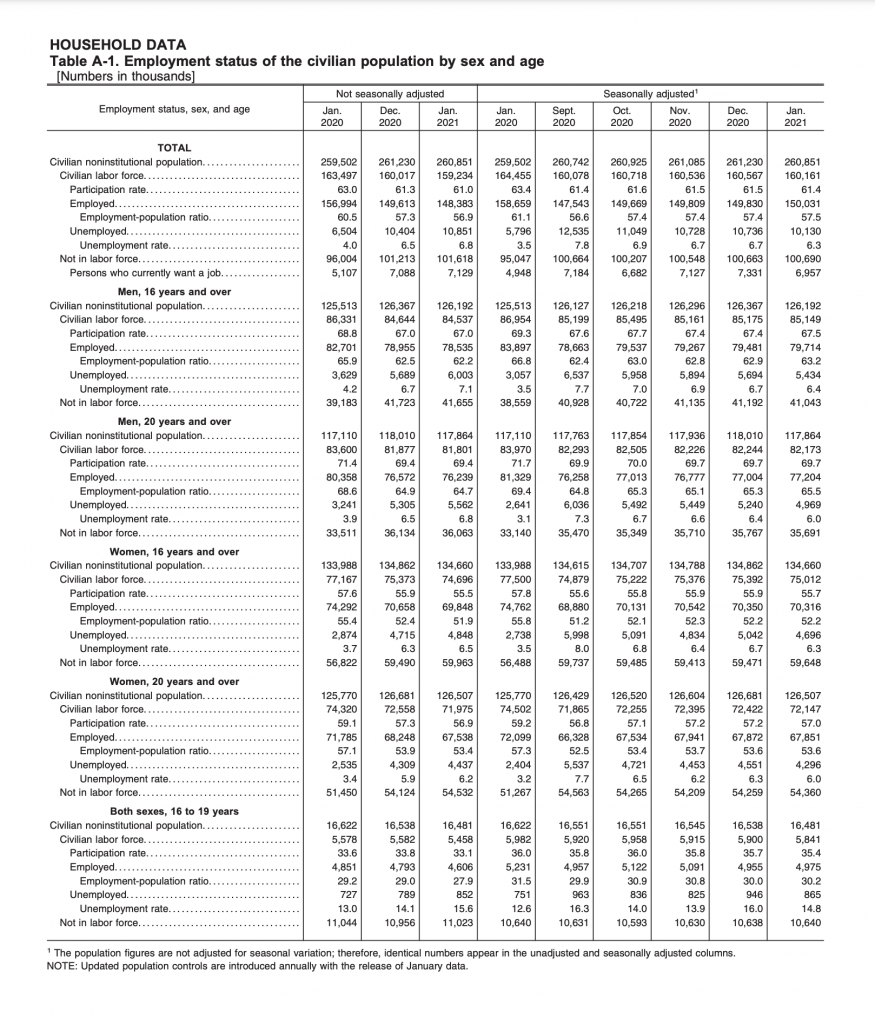
By Race, Sex, and Age:
Whites 5.7% | Hispanics 8.6% | Blacks 9.2% | Asians 6.6%
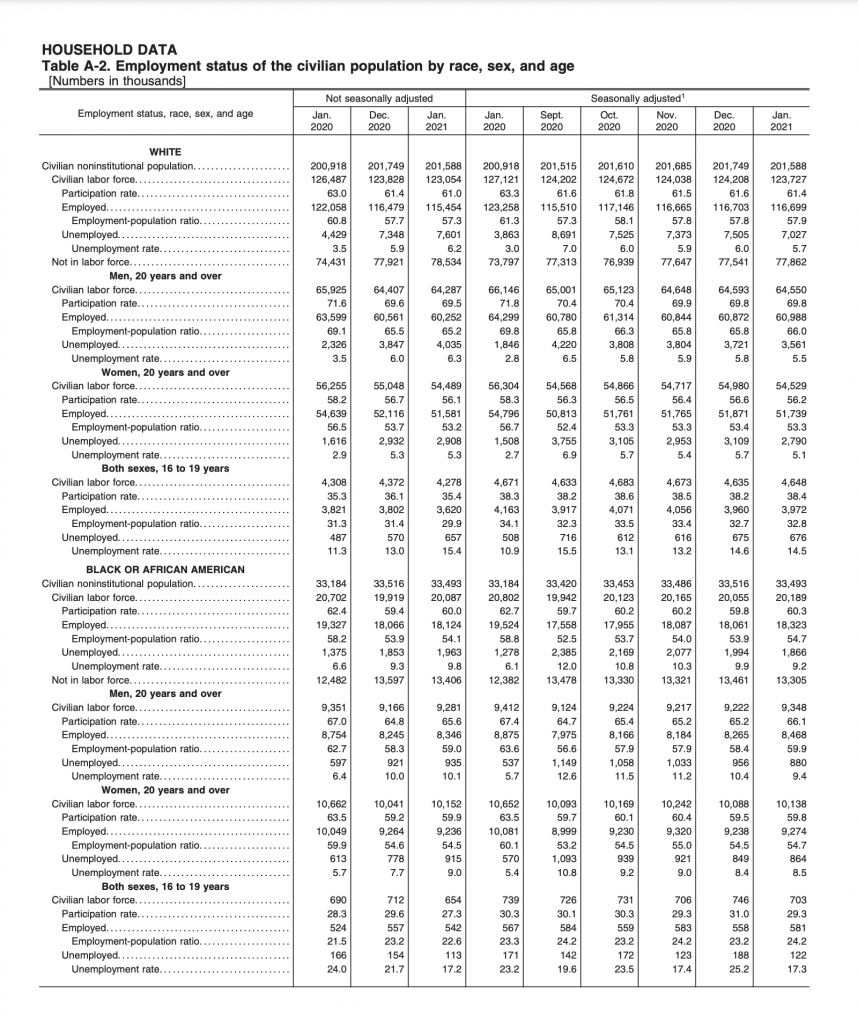
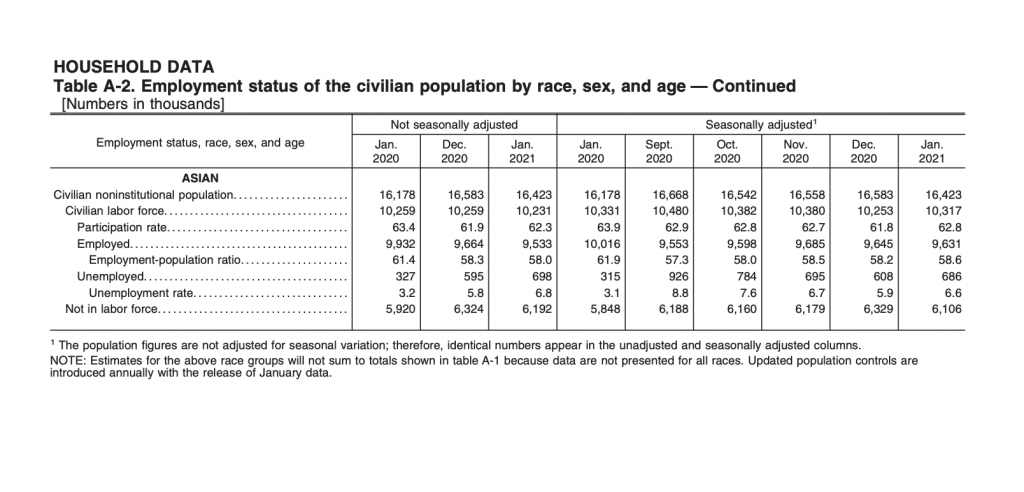
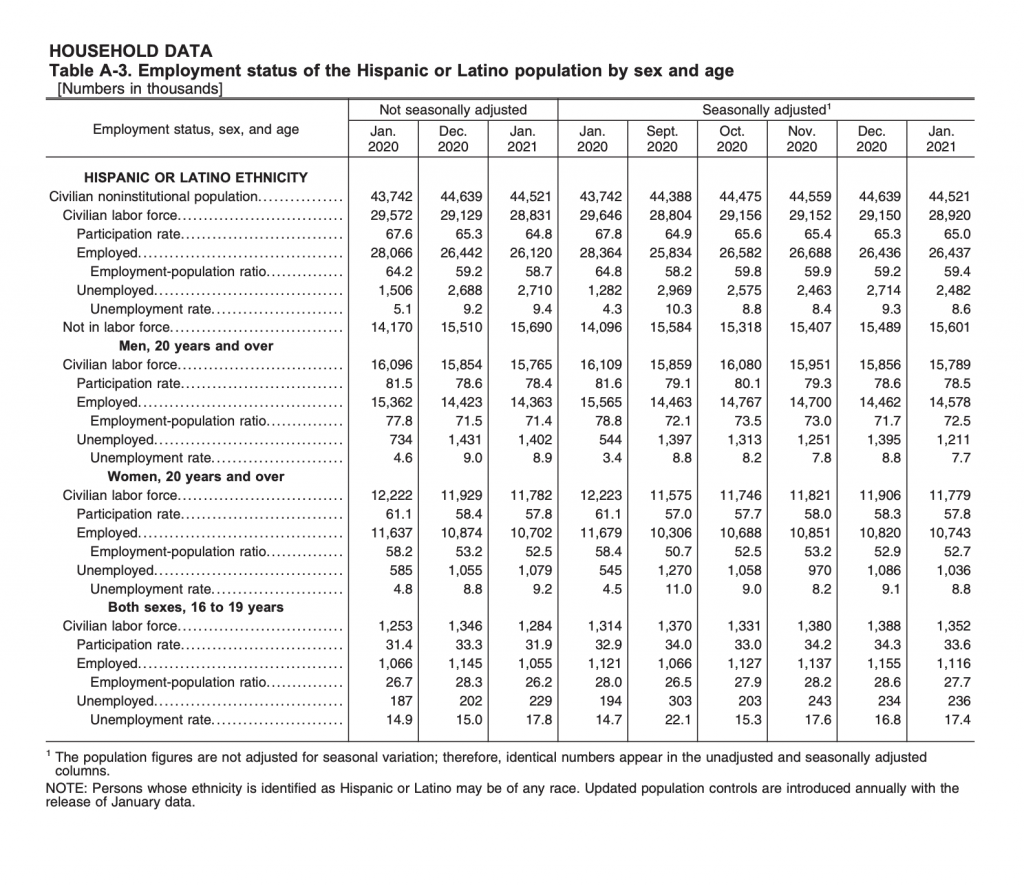
By educational attainment (25 years of age and over)
Less than a High School Diploma 9.1% | High School Graduates 7.1% | Some College 6.2% | Bachelor’s Degree or Higher 4%
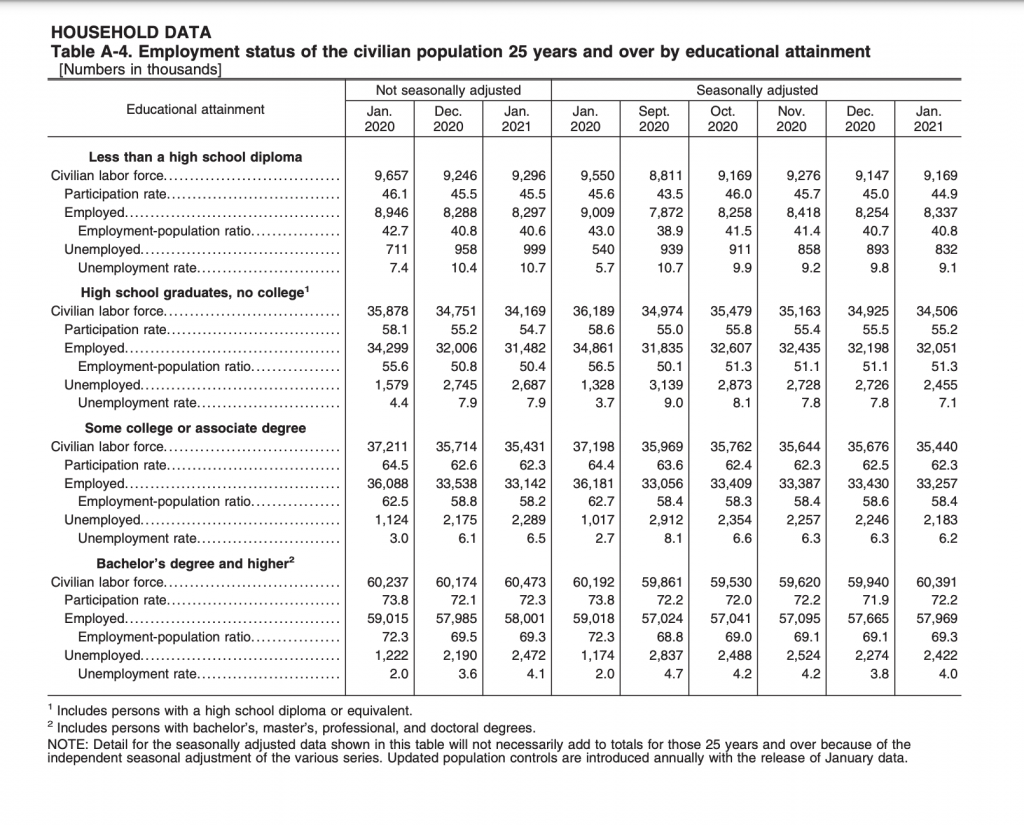
By veteran status, the period of service, and sex
Total 5.5% | Men 5.8% | Women 3.3%
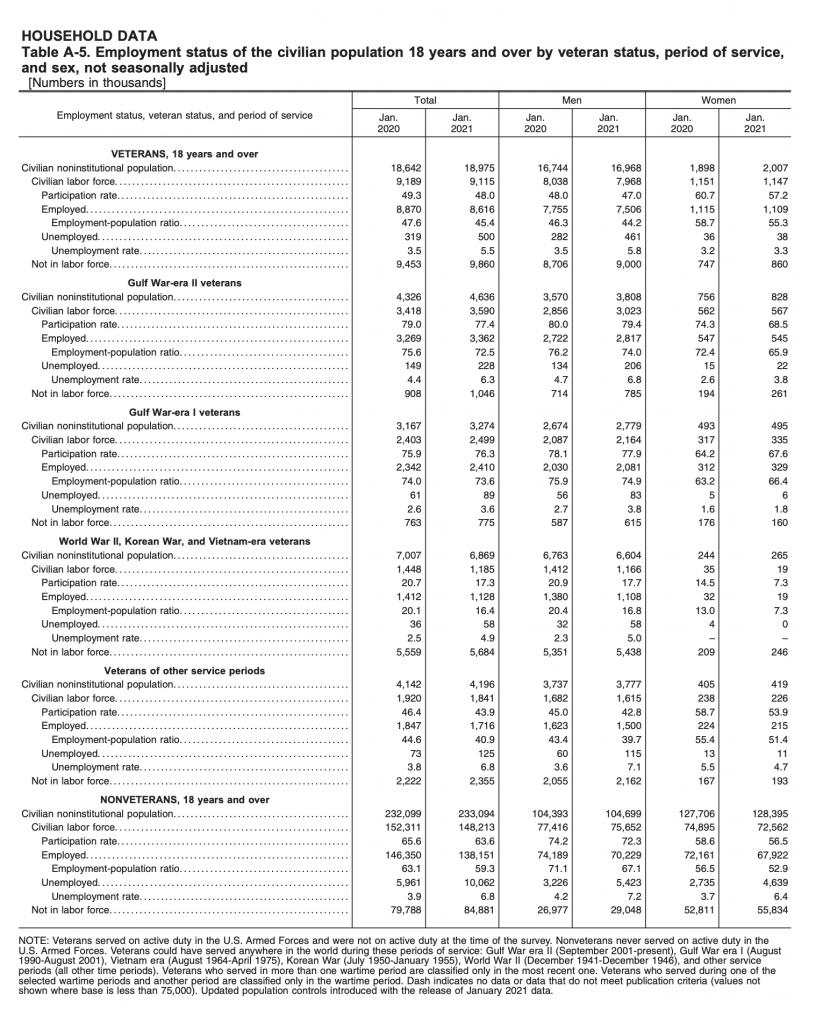
By disability status, sex, and age
Total 12.0% | Men 13.8% | Women 11.3%
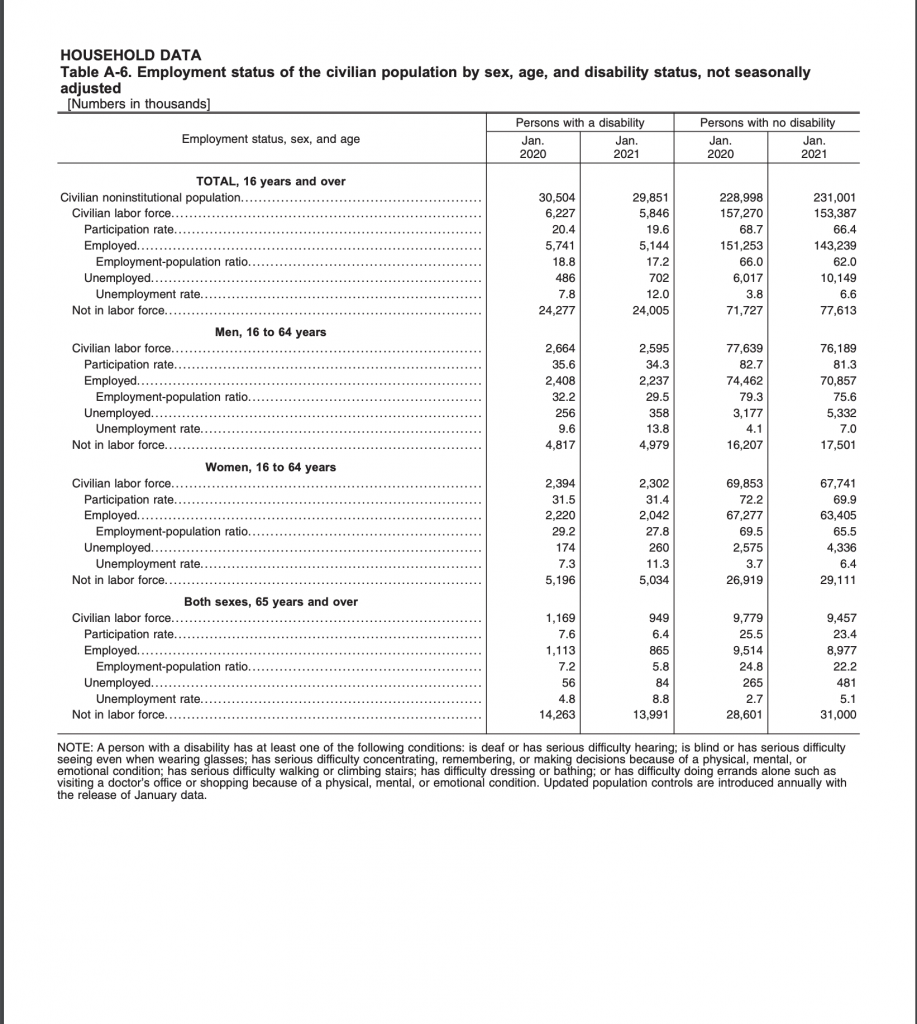
By nativity and sex
Foreign-born Total 8.1% | Men 7.2% | Women 9.3%
Native-born Total 6.5% | Men 7.1% | Women 6.0%
